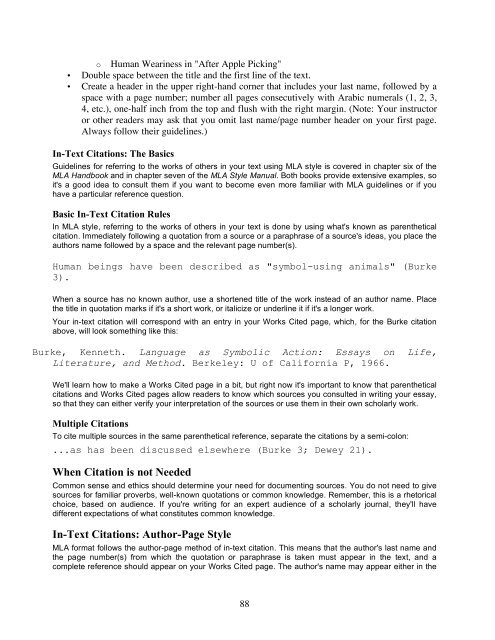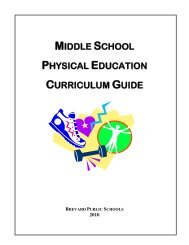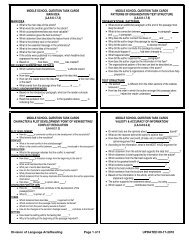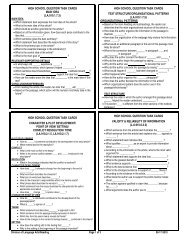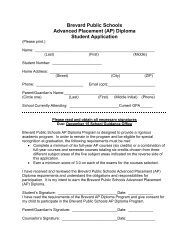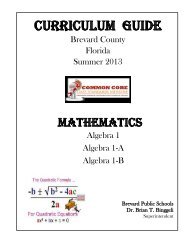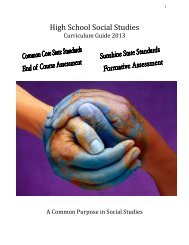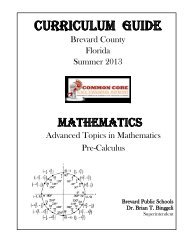Science Research Program Guide - Secondary Programs Home ...
Science Research Program Guide - Secondary Programs Home ...
Science Research Program Guide - Secondary Programs Home ...
You also want an ePaper? Increase the reach of your titles
YUMPU automatically turns print PDFs into web optimized ePapers that Google loves.
o Human Weariness in "After Apple Picking"<br />
• Double space between the title and the first line of the text.<br />
• Create a header in the upper right-hand corner that includes your last name, followed by a<br />
space with a page number; number all pages consecutively with Arabic numerals (1, 2, 3,<br />
4, etc.), one-half inch from the top and flush with the right margin. (Note: Your instructor<br />
or other readers may ask that you omit last name/page number header on your first page.<br />
Always follow their guidelines.)<br />
In-Text Citations: The Basics<br />
<strong>Guide</strong>lines for referring to the works of others in your text using MLA style is covered in chapter six of the<br />
MLA Handbook and in chapter seven of the MLA Style Manual. Both books provide extensive examples, so<br />
it's a good idea to consult them if you want to become even more familiar with MLA guidelines or if you<br />
have a particular reference question.<br />
Basic In-Text Citation Rules<br />
In MLA style, referring to the works of others in your text is done by using what's known as parenthetical<br />
citation. Immediately following a quotation from a source or a paraphrase of a source's ideas, you place the<br />
authors name followed by a space and the relevant page number(s).<br />
Human beings have been described as "symbol-using animals" (Burke<br />
3).<br />
When a source has no known author, use a shortened title of the work instead of an author name. Place<br />
the title in quotation marks if it's a short work, or italicize or underline it if it's a longer work.<br />
Your in-text citation will correspond with an entry in your Works Cited page, which, for the Burke citation<br />
above, will look something like this:<br />
Burke, Kenneth. Language as Symbolic Action: Essays on Life,<br />
Literature, and Method. Berkeley: U of California P, 1966.<br />
We'll learn how to make a Works Cited page in a bit, but right now it's important to know that parenthetical<br />
citations and Works Cited pages allow readers to know which sources you consulted in writing your essay,<br />
so that they can either verify your interpretation of the sources or use them in their own scholarly work.<br />
Multiple Citations<br />
To cite multiple sources in the same parenthetical reference, separate the citations by a semi-colon:<br />
...as has been discussed elsewhere (Burke 3; Dewey 21).<br />
When Citation is not Needed<br />
Common sense and ethics should determine your need for documenting sources. You do not need to give<br />
sources for familiar proverbs, well-known quotations or common knowledge. Remember, this is a rhetorical<br />
choice, based on audience. If you're writing for an expert audience of a scholarly journal, they'll have<br />
different expectations of what constitutes common knowledge.<br />
In-Text Citations: Author-Page Style<br />
MLA format follows the author-page method of in-text citation. This means that the author's last name and<br />
the page number(s) from which the quotation or paraphrase is taken must appear in the text, and a<br />
complete reference should appear on your Works Cited page. The author's name may appear either in the<br />
88


